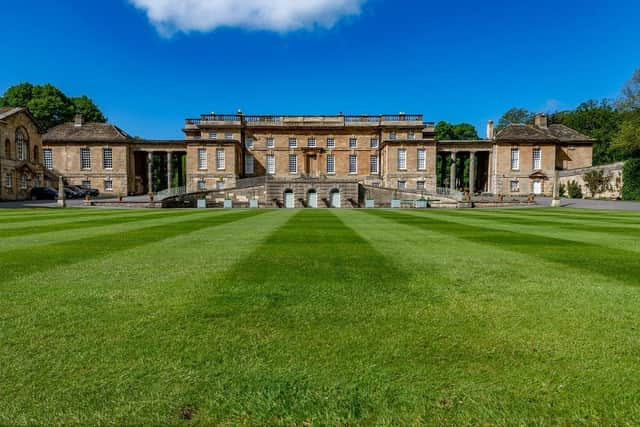Best historical sites to visit in Leeds according to TripAdvisor - from an ancient monastery to a museum of medicine
You could be in the mood for a wander through Thackray Museum of Medicine or a browse around the ancient ruins of Kirkstall Abbey, Leeds has got it all.
Historians can enjoy an educational tour of the Tudor-Jacobean house, Temple Newsam, or a wander around Bramham Park, an 18th century estate.
Advertisement
Hide AdAdvertisement
Hide AdBelow is a list of the best historical sites in Leeds according to TripAdvisor.


Temple Newsam
This historic house was referenced in the Domesday Book of 1086 as Neuhusam, which means ‘new houses’. It was occupied by Ilbert de Lacy and his sons.
Before the Norman Conquest of 1066, it had been used by Dunstan and Glunier, Anglo-Saxon thanes. ‘Thanes’ or ‘thegns’ were lords who held their lands directly from the king in exchange for military service during the war.
Remains of the early 16th century house were retained, including the brickwork and bay windows in the centre of the west front.
Advertisement
Hide AdAdvertisement
Hide AdTemple Newsam has a rating of four and a half stars on TripAdvisor with 1,157 reviews.
Harewood House
Harewood is one of the Treasure Houses of England and was built in the 18th century by architects Robert Adam, Charles Barry and John Carr.
The estate was owned by David and Diane Lascelles, Earl and Countess of Harewood. It has a nationally recognised conservation programme and houses contemporary art, a rare bird garden and a farm experience with more than 100 acres of stunning gardens to see.
It has a rating of four stars on TripAdvisor with 1,423 reviews.
Kirkstall Abbey
Advertisement
Hide AdAdvertisement
Hide AdThe abbey was founded in 1152 by a community of Cistercian monks from Fountains Abbey and it gained its wealth from keeping sheep for the wool trade.
The monk’s life ended in November 1540 when the abbey was relinquished to Henry VIII during the abolishment of the monasteries.
Whilst a few buildings were knocked down to ground level, most were left standing and used for agriculture.
Kirkstall is the most complete Cistercian ruins in Britain and the abbey is now taken care of by Leeds City Council as of 2011.
Advertisement
Hide AdAdvertisement
Hide AdThe abbey has a rating of four and a half stars on TripAdvisor with 1,191 reviews.
Thackray Museum of Medicine
The museum was originally a small family-run chemist which opened in 1902 by Charles Thackray in Great George Street, Leeds.
Charles turned the business into a huge medical supply company where he administered drugs and medical equipment internationally.
The museum building first opened in 1861 as the Leeds Union Workhouse, a strict and unwelcoming shelter for the poor and over time new buildings were slowly added to the workhouse.
Advertisement
Hide AdAdvertisement
Hide AdThe Leeds Union Workhouse Infirmary was renamed St James’s Hospital in 1925, by which time the rest of the workhouse was combined with the hospital and it became part of the NHS in 1948.
It became Thackray Museum of Medicine in 1997 as it was deemed ‘unfit’ for modern medicine by the 1990s.
Thackray Museum of Medicine has a rating of four and a half stars on TripAdvisor with 844 reviews.
Bramham Park
The country house was built in 1698 by Robert Benson, later Lord Bingley, who celebrated the end of his formal education with a grand tour in 1697.
Advertisement
Hide AdAdvertisement
Hide AdLord Bingley’s family has been caring for Bramham Park’s heritage for 300 years, during which time the house has survived a devastating fire, two World Wars and gambling debts.
The house has a rating of four and a half stars on TripAdvisor with 36 reviews.
Lotherton Hall
The house was first occupied by the Gascoigne family in 1825 when it was bought by Richard Oliver Gascoigne.
His initial plan was for his sons to inherit the house, but in 1842 both of them died leaving the Gascoigne estate to his daughters. A year later, Richard passed away and it was owned by his daughters, who divided the estate between them; Mary Isabella took Parlington Hall, while Elizabeth took Lotherton Hall.
The hall has a rating of four and a half stars on TripAdvisor with 877 reviews.